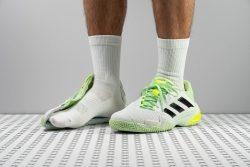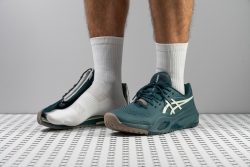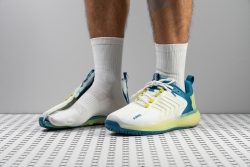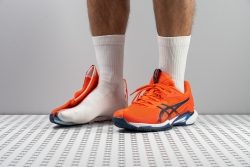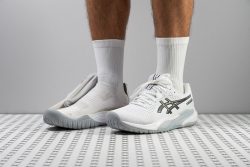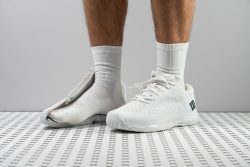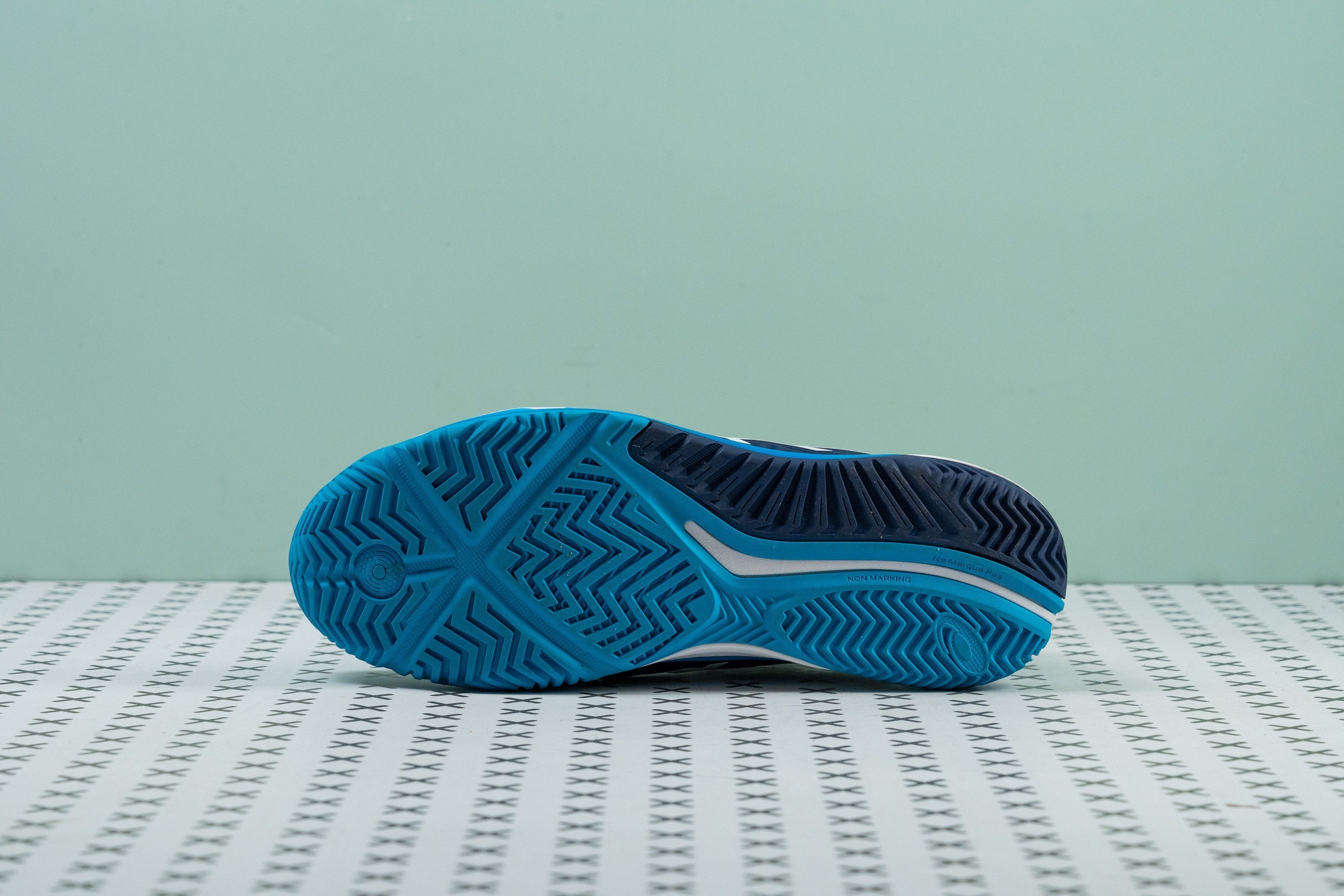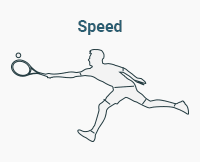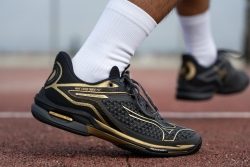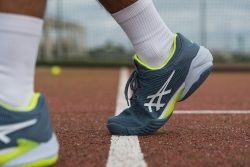7 Best Tennis Shoes in 2025
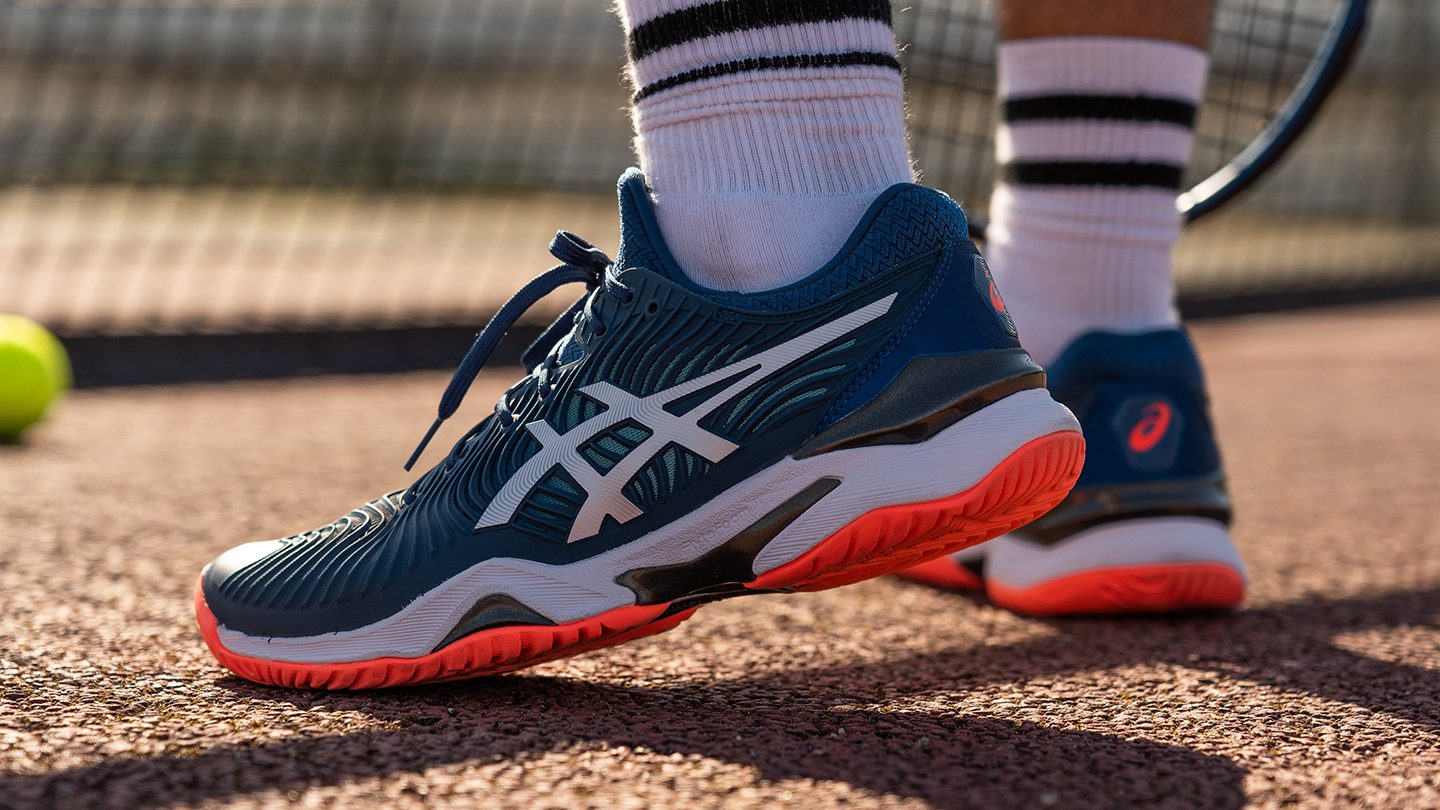
We buy shoes ourselves. We earn commissions when you buy through us, at no extra cost. Why trust us
Disclaimer: This guide will be covering athletic tennis shoes that are used for playing on the court. If you are after a pair of casual trainers, see our selection of tennis-inspired kicks.
When you are just starting out, all tennis shoes appear the same. However, the way they feel and perform on the court can vary greatly. We have tested tennis shoes from different brands to help you find the one that works best for you.
Some tennis shoes are made for nimble players, others have more cushioning or stability for the most aggressive playing styles. When in doubt, just go with the top picks we selected in various categories.
How we test tennis shoes
At RunRepeat, we do not let a tennis shoe release pass unnoticed. We are proud experts in scrutinising each model deliberately. To deliver you a downright honest view and observation:
- We buy all the tennis shoes that we are going to test using our own money. We do not accept sponsorships or any form of assistance from anyone, especially the brands.
- We test all tennis shoes on the court. While on our feet, we assess how the shoes perform on clay courts and hard courts, as well as how they generally respond to sudden stops and quick movements.
- We take the shoe to our lab and perform over 30 different tests that result in comprehensive data on stack height, energy return, shock absorption, toe guard durability, flexibility, traction, and many more.
Best tennis shoes overall

















































What makes it the best?
The king of all tennis shoes is the ASICS Court FF 3 and its game-optimising features serve as a testament to its superiority. This shoe has no issue facing frequent wear because of its reliable construction. And on the game proper, it proves to be energy-saving every landing and supportive on every position shift.
In our lab, we measured its midsole’s softness. With a 31.5 HA value displayed on our durometer, this shoe’s midsole falls within the average, granting us supreme responsiveness and extra stability on the court. Although we subjected Court FF 3 to a lot of games, the outsole remained intact. As it turned out, our durometer detected the outsole hardness at 85.3 HC, which is close to the 87.3 HC average. When we applied our Dremel to the outsole, a 0.4 mm dent was derived, which has 0.1 mm less depth than the average.
Our calliper recorded heel and forefoot stack heights of 28.8 mm and 20.6 mm. While the amount of cushioning is average, with a 6.3% lesser difference than their averages, we didn’t feel the need for more since the dual-density foam and the incorporated gel inserts took care of the impact protection and smooth propulsions.
We found the ASICS Court FF 3 snug. With our calliper, we realised that the 101.8 mm width across the widest part of its toebox is just standard among tennis shoes. If you require more room for your toes, we advise getting the pair in a larger size or opting for other wide-fitting tennis shoes.
Pros
- Top-notch abrasion resistance
- Excellent impact protection
- Unmatched foot containment
- Exceptionally stable platform
- Fantastic grip and sliding
- Very comfortable in-shoe feel
- Very comfortable in-shoe feel
Cons
- Lacks breathability
- Not for wide feet
- High price
Tennis shoes with the best stability
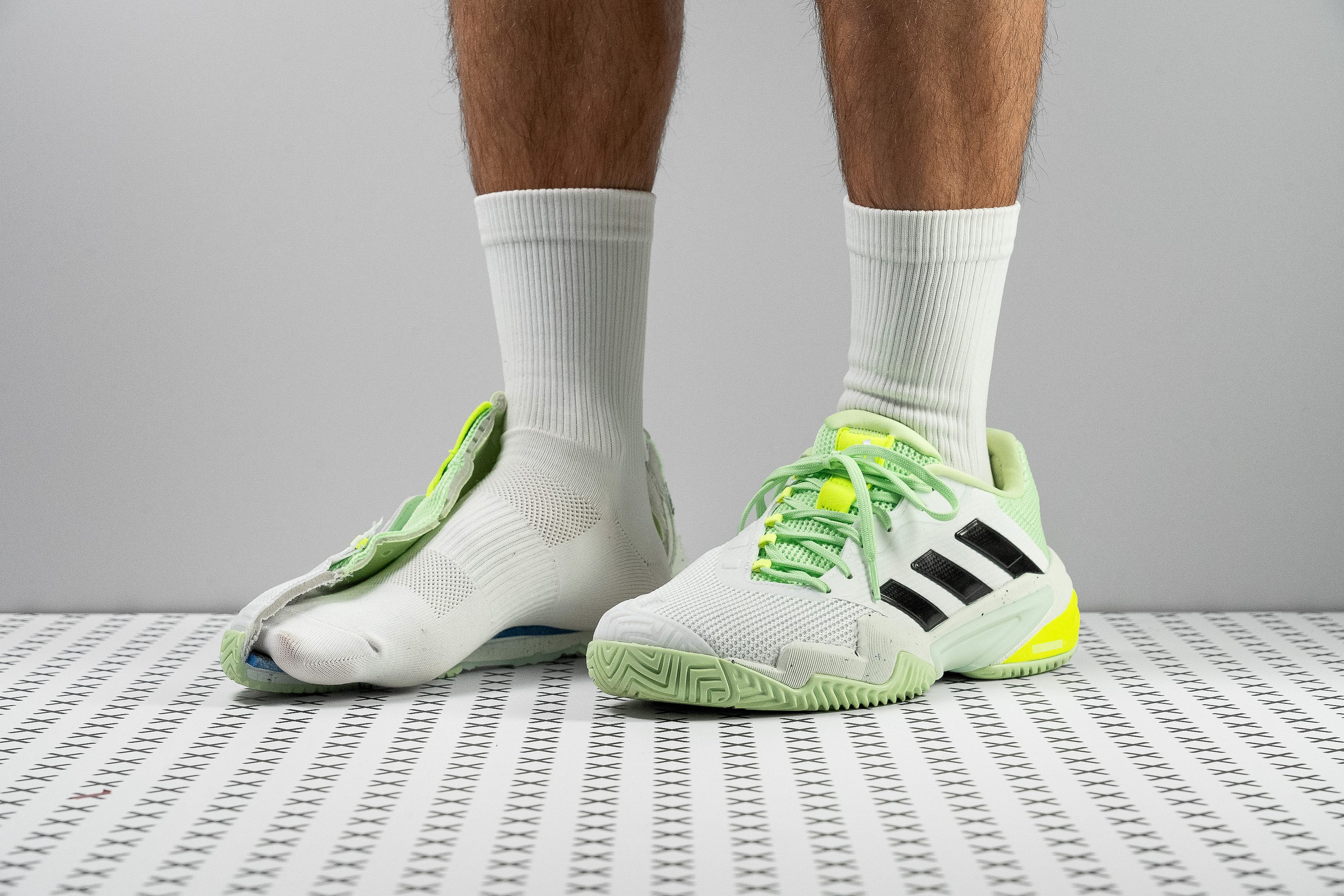

















































What makes it the best?
The Adidas Barricade 13 was the best tennis shoe for stability. Not only was the platform wide enough to contain our feet at all times, but it was also stiff enough to protect us from painful foot twists. We also appreciated that the shoe was structurally flexible, allowing it to follow the natural flexions of our feet as we chased after the ball during tennis matches.
Using a calliper, we learned that the platform was significantly wider than usual. At the forefoot, it was 115.4 mm wide when the average was only 111.7 mm. At the heel, the reading was 95.3 mm, convincingly eclipsing the 89.7 mm average. There was no way our feet would still fall off the footbed with that much space!
Aside from being wide, the base of the foot was amazingly resistant to twisting. We subjected this tennis shoe to manual twists in the lab, and we had to sweat a lot before we could make it yield. We gave this shoe a 4 out of 5 for torsional rigidity.
While the base resisted twists, it still retained its linear flexibility. In the lab, we learned that the Adidas Barricade 13 needed a near-average 16.7N force to reach 30 degrees.
Too bad breathability was a bit overlooked by the makers of the Adidas Barricade 13. It felt hot, and this shoe performed poorly in our breathability assessments. It only got a 2 out of 5 for ventilation.
Pros
- Exceptional stability and arch support
- Wide and steady platform
- Hard-wearing outsole with a 6-month guarantee
- Fantastic outsole grip
- Sufficient impact protection
- Great court feel
- Highly secure foothold and lockdown
- Outsole grips and slides well
Cons
- Upper is not the most durable
- Cushioning lacks bounce and responsiveness
Tennis shoes with the best traction
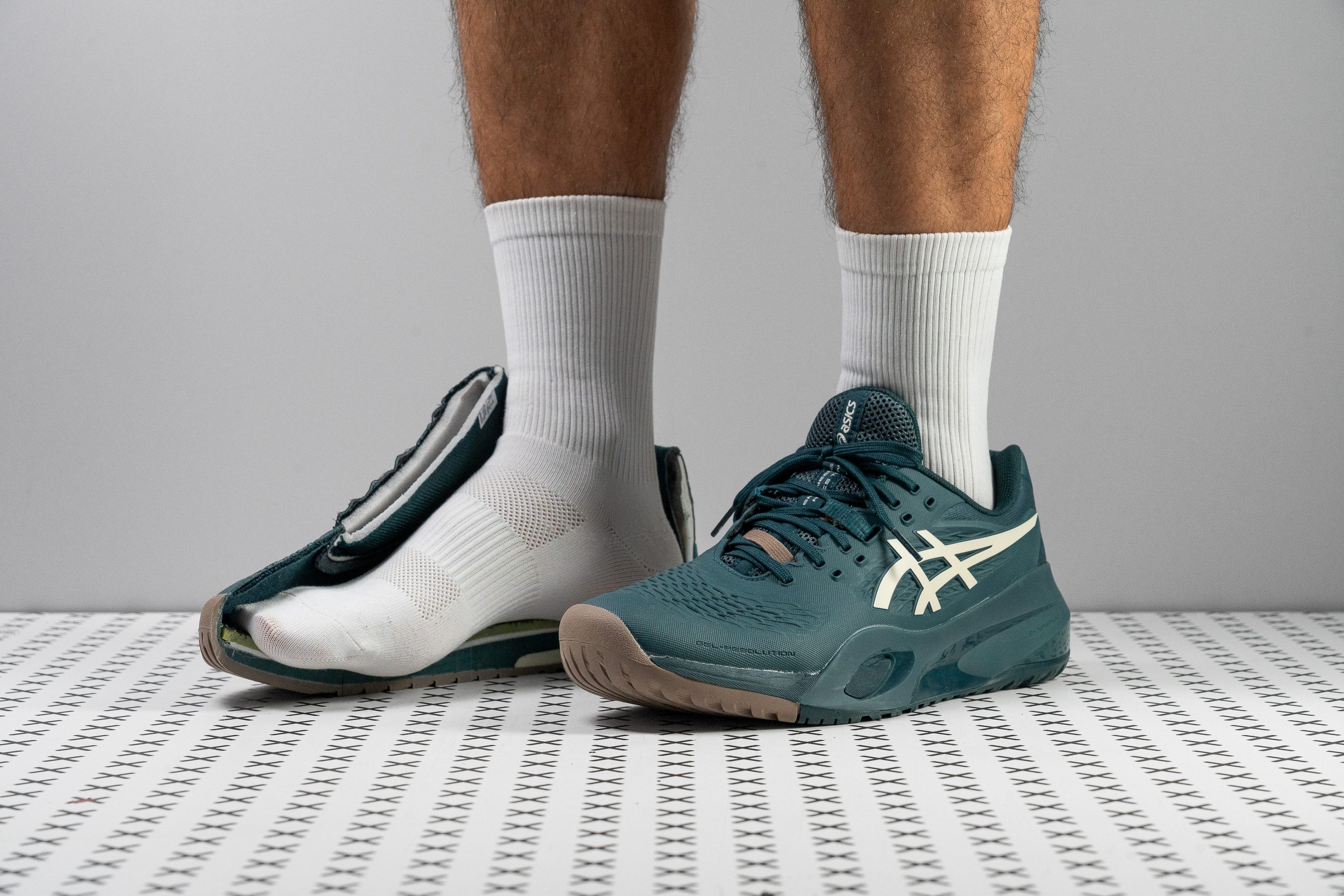















































What makes it the best?
The ASICS Gel Resolution X feels well-balanced: it can stop as we please without worrying about burning through the shoe, and it feels both cushioned and stable. After lab assessments, we can confirm it dominates the tennis shoe category in terms of traction, allowing us to feel confident in our footwork.
We tested the AHAR rubber in our traction test, and it recorded 0.89, generating 17.1% stronger grip than average. Its performance is reflected in the way we can abruptly stop and shift directions, and how well-planted we felt when pushing off the court. We had no worries about dragging the rubber because it performed exceptionally well in our Dremel test, showing 14.3% less damage than average.
The midsole features a rigid exoskeleton called the DYNAWALL, which secures our feet inside the shoe. It’s almost impossible to twist our ankles in this shoe, confirmed by its maximum 5/5 torsional rigidity rating.
To counter all the tough elements, a cushioned midsole awaits. Its near-average 30.8/21.9 mm stack height offers a good mix of joint protection and court connection. Under the balls of our feet, we enjoyed solid shock absorption, backed up by its above-average 70 SA score.
Just something to note, the raised collar on the inner side may be a bother. It might work with others, but for some of us, our ankle bones didn’t sit well with it.
Pros
- Unbeatable durability + 6-month warranty
- Impeccable stability and support
- Perfect for wide feet
- Customizable Dynalacing
- Fantastic outsole traction
- Great impact protection
- Energy return is better than in v9
- Generously padded interiors
Cons
- Unusual fit and sizing
- Raised collar is a mixed bag
- Long break-in period
- Heavier than most tennis shoes
Tennis shoes with the best shock absorption











































What makes it the best?
The K-Swiss Ultrashot 3 was an absolute pleasure to test on the court, and analysing it further in the lab blew us away. It has exceptional cushioning that’s balanced by reliable traction and stability elements to ensure we remain in control. Blending comfort and support into one, we awarded it as the best shock-absorbing tennis shoe.
Each landing feels well-protected, and our legs felt good even during longer matches. With a high 109 SA or shock absorption measurement in the heel, Ultrashot 3 feels good underneath.
The midsole draws stability from its 360 Plantar Chassis, which consists of a midfoot shank with a stiff framework around it. Scoring a solid 4/5 torsional rigidity rating in our assessment, we could move laterally and stop on a sixpence without second thoughts.
We never held back when we wanted to shift our directions in a heartbeat, and our traction test confirms the outsole is 8.9% grippier than average. We observed a mix of sharp and flat herringbone patterns in the outsole, which explains why we could easily slide as needed.
Sadly, Ultrashot 3 has limited breathability, meaning it won’t survive heatwaves and humid weather. If ventilation is a priority, skip this pair.
Pros
- Abundant shock absorption
- Great lateral stability and support
- Superb outsole traction
- Highly durable outsole
- Secure lockdown
Cons
- Static unresponsive ride
- Upper could be more durable
- Lacks breathability
Best tennis shoes for speed
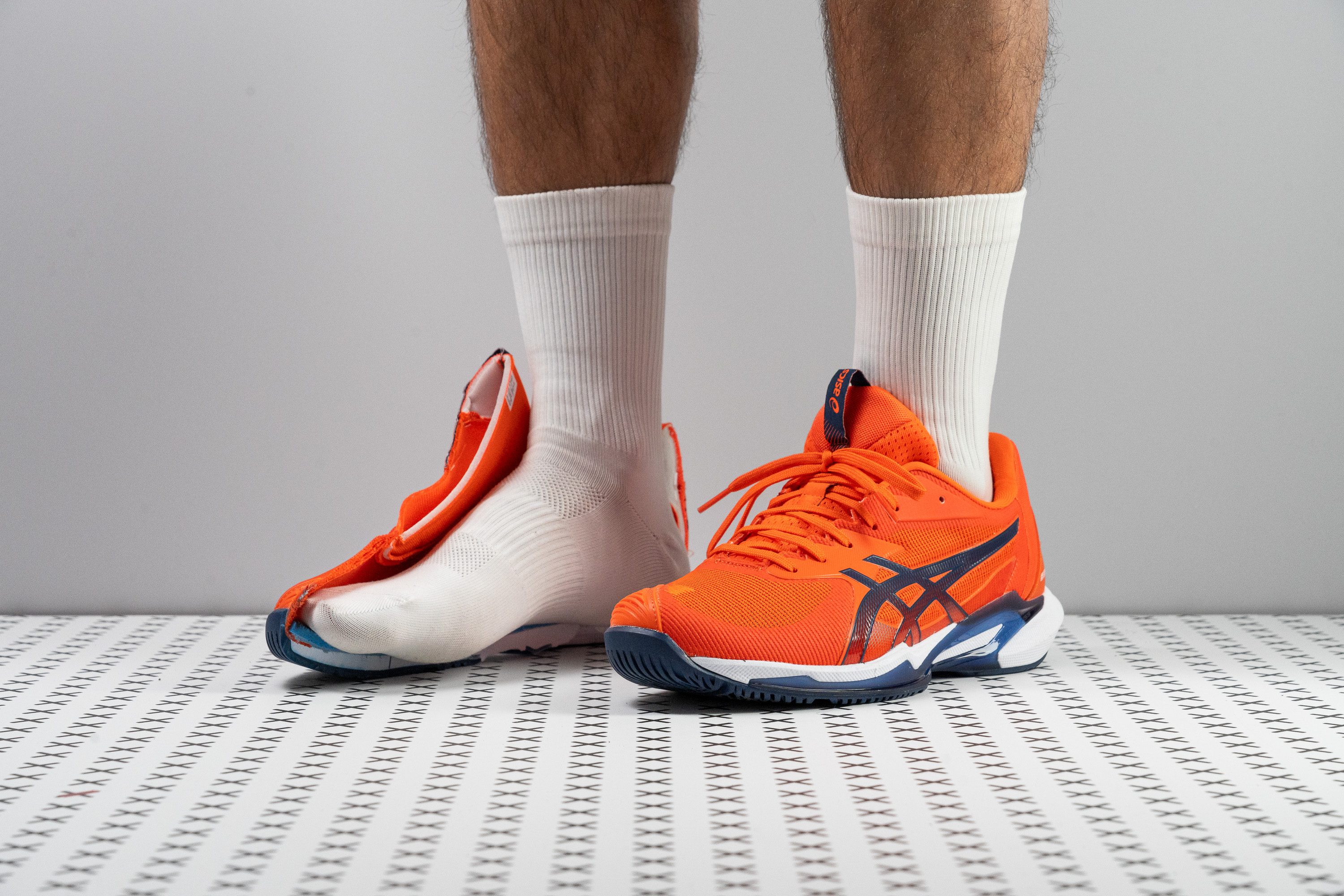















































What makes it the best?
Solution Speed FF 3 is in a league of its own. Already in its name, it’s our top-speed tennis shoe, allowing us to move quickly and gracefully through the court with its light build and responsive ride. Our lab confirms the exceptional control, grip, and durability of the shoe, allowing us to stay at the top of our game effortlessly.
During our matches, we easily forgot about the shoe as it melted away on our feet. Our scales confirm its weightless and sleek design at 10.9 oz (309g), 15.1% lighter than average. The FlyteFoam cushioning keeps us connected to the court while offering energetic responses, enhancing the shoe’s light and nimble feel. Our durometer reveals the foam is a balanced 31.5 HA, enhancing our stability.
Further enhancing our control over sudden changes in footwork is the reliable traction of the Precision Sole. Its pattern keeps us surefooted while its 84.0 HC toughness ensures a long lifespan. Solution Speed FF 3 isn’t afraid of friction from all angles, as its outsole (42.9% less wear), toebox (5/5), and heel (5/5) all resisted our rigorous Dremel remarkably. While most durable uppers sacrifice breathability, this shoe defies our expectations and delivers a jaw-dropping 5/5 breathability rating, keeping our feet cool during heated games.
However, we don’t recommend this pair to wide-footed players as the forefoot runs narrower than average.
Pros
- One of the lightest tennis shoes on the market
- Fantastic wear resistance and durability
- Exceptionally breathable for a tennis shoe
- Grounded platform with a great court feel
- Rockered heel makes transitions faster and smoother
- Solid stability for a speed-oriented shoe
- Perfect grip with enough give
- Perfect grip with enough give
Cons
- Not for wide feet
- Not very stable for baseline players
Best tennis shoes for beginners
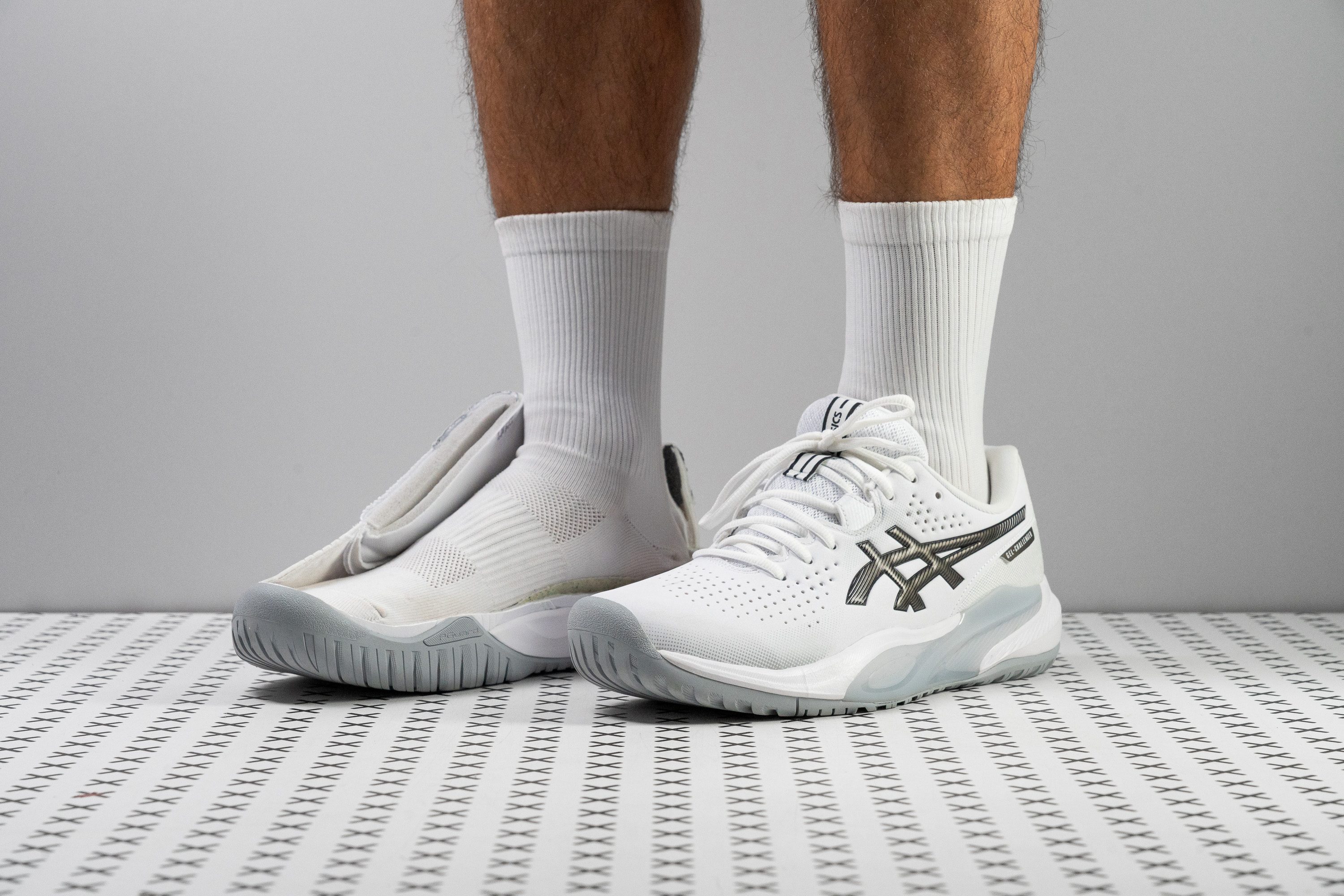












































What makes it the best?
Following rigorous testing on the court and in the lab, the ASICS Gel Challenger 15 offers fantastic support in an exceptionally durable package. Its stable feel allows us to focus on our game fully. Plus, its £110 price point is non-intimidating, making it our best tennis shoe for beginners.
From quick lateral movements to sudden direction changes, we never felt like losing control or balance. The WINGWALL design has such a strong foothold that even our ankles and heels are held firmly in place. Our manual assessment backs up its sturdiness with the maximum 5/5 rating in both torsional and heel rigidity.
Sliding and stopping as needed felt easy thanks to the outsole’s effective, yet forgiving traction. With a below-average 0.58 score, it gripped the court as needed but allowed room for sliding as well. Even with constant friction, the AHARPLUS rubber is resilient, showing a shallow 0.6 mm dent in our Dremel test.
From top to bottom, this shoe exceeded the average in our durability tests. From the PGuard toe drag guard (5/5), heel padding (5/5), and the toebox (4/5), the shoe remained intact after abrasion tests.
However, breathability is limited, which may feel suffocating to players in hot weather. Those who need more ventilation should explore other alternatives.
Pros
- Uncanny value for money
- Unbelievably stable ride
- Much wider and steadier base
- Great outsole grip and give
- Fantastic durability for the price
- Accommodating fit
- Generously padded interiors
Cons
- Massive weight gain
- Minimal shock absorption
- Not very breathable
Best budget tennis shoes
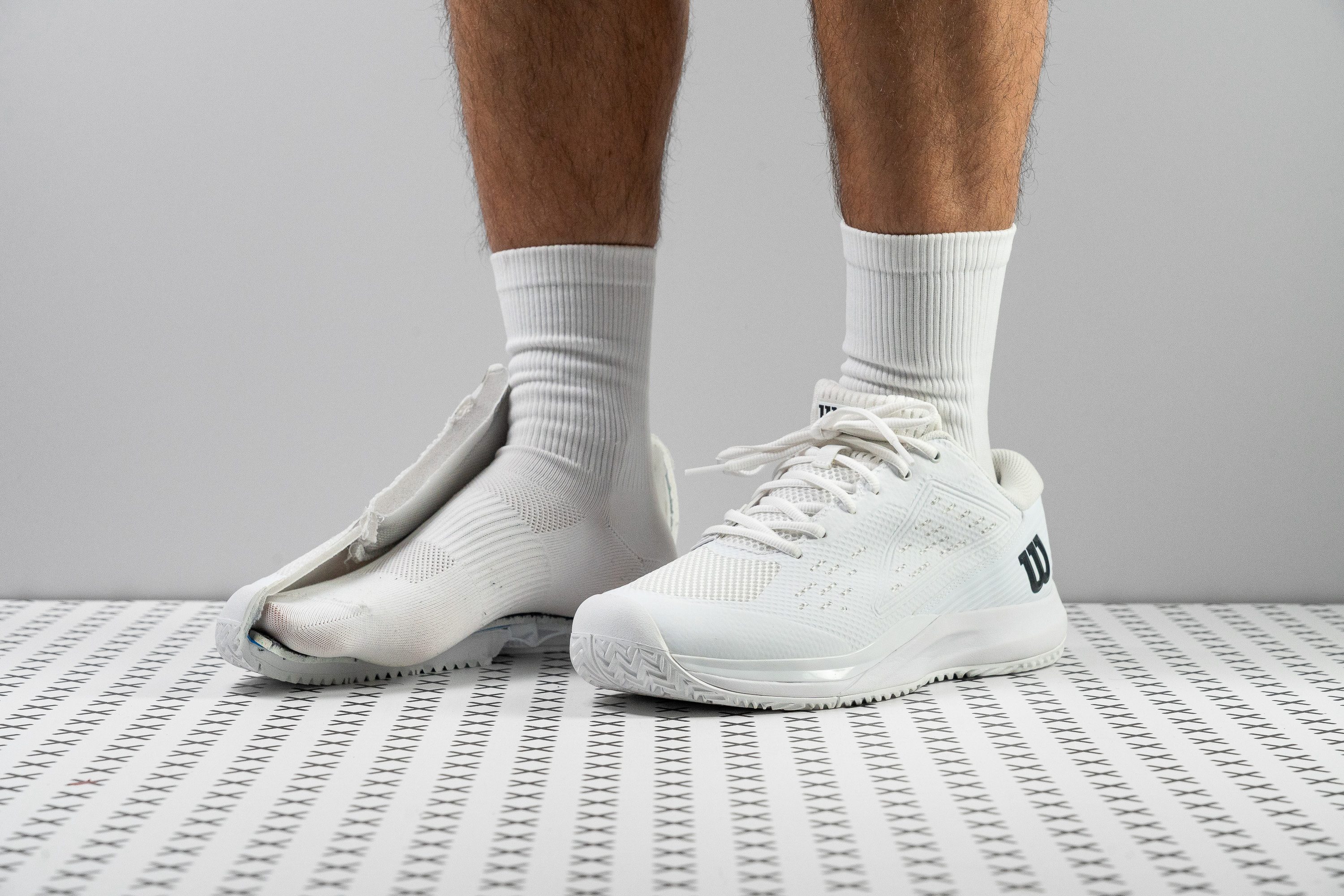














































What makes it the best?
Ready for lateral movements, toe drags, and repetitive use, the Wilson Rush Pro Ace was a pleasure to wear in our playtests. While the average lab-tested tennis shoe costs £140, this pair delivers excellent value for money and all-around reliability for its £100 price, making it our best-budget tennis shoe.
Sliding and toe dragging felt effortless in this shoe and we had no hesitations because of the Medial Rubber Drag Pad, which scored a remarkable 4/5 durability rating in our Dremel test.
Even if we perform hard dashes and explosive lateral movements, we felt secured with our footing. We discovered the 4D Chassis in the midsole, contributing to the shoe’s torsional stiffness, backed up by its 4/5 rating in our manual twist test. The firm 27.1 HA base also adds to our surefootedness since it doesn’t compress unevenly.
It also features a wide-foot friendly toebox that offers a forgiving fit because it’s not too pointy. Using our gel mould, we confirmed it is indeed wide in the big toe area at 72.7 mm vs. the 69.3 mm average.
However, its subpar breathability won’t be cool enough for heated games or summer sessions. Those who want maximum ventilation should try alternatives.
Pros
- Excellent value for money
- Solid lateral support and stability
- Good impact protection
- Very durable rubber for the price
- Balanced outsole grip and give
- Accommodating toebox
- Comfortable padded interiors
Cons
- Not so breathable
- Frail upper materials and laces
How to choose tennis shoes
To achieve the best experience on the court, your tennis footwear must match the following:
- your court type (hard or clay)
- your playing style (agile or aggressive)
Above else, tennis shoes are categorised by the type of court they are intended for. The most common ones today are hard-court and clay-court tennis shoes. You might as well come across tennis shoes marked as "AC," of "all court." As the name suggests, these are suitable for both.
The brands most often release the same model in both hard-court and clay variations.
Hard court tennis shoes
| Hard Court | |
| Court characteristics |
|
| Outsole |
a multi-directional tread pattern allows for both grip and sliding; has the most durable outsole lugs |
Clay court tennis shoes
| Clay Court | |
| Court characteristics |
|
| Outsole |
a full herringbone lug pattern allows sliding and doesn’t collect dust from the court |
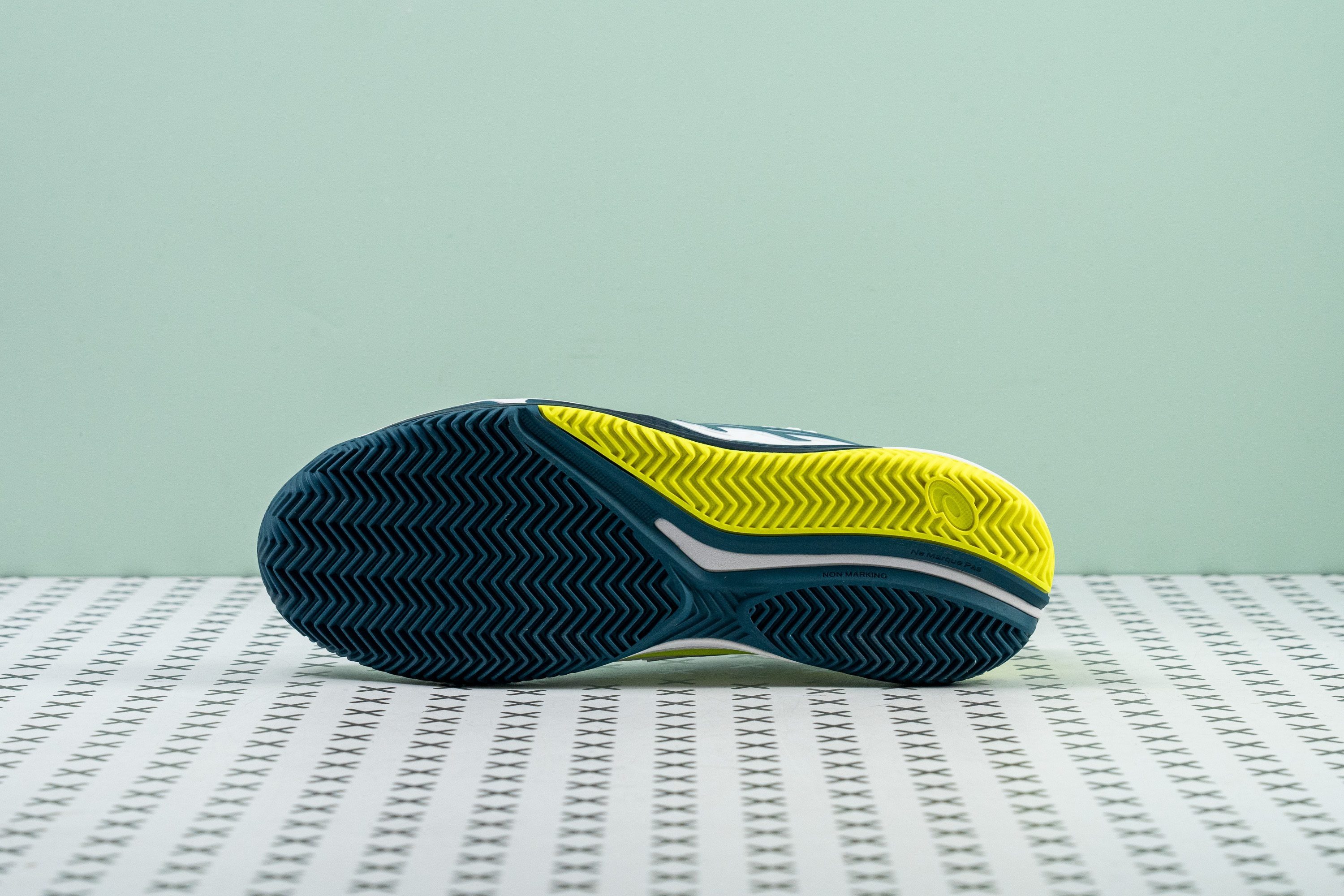
Good to know
It is not recommended to use hard-court shoes on clay and vice versa. While it may not be a big problem for a game or two, for regular use, it is better to wear a court-specific or an all-court trainer.
- Clay-court shoes on the hard court: high grip makes it difficult to slide on the court, which can be hard on the ankles and joints; the outsole wears out faster.
- Hard-court shoes on clay: do not have the needed amount of grip; easily get clogged with clay dirt.
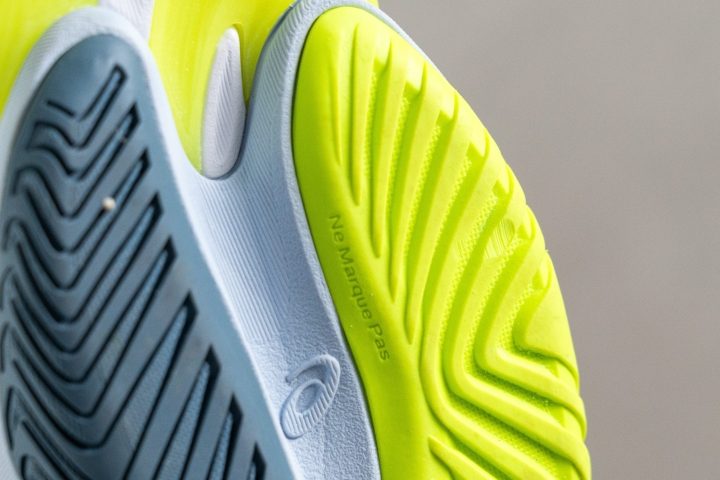
Tennis shoes based on playing styles
All tennis shoes can be roughly segmented into two categories based on the primary benefits they offer: speed and stability. Which one to choose depends on the type of player you are and your preferences for the shoe feel.
Speed-oriented tennis shoes
|
|
Best for agile, aggressive players who slide often
|
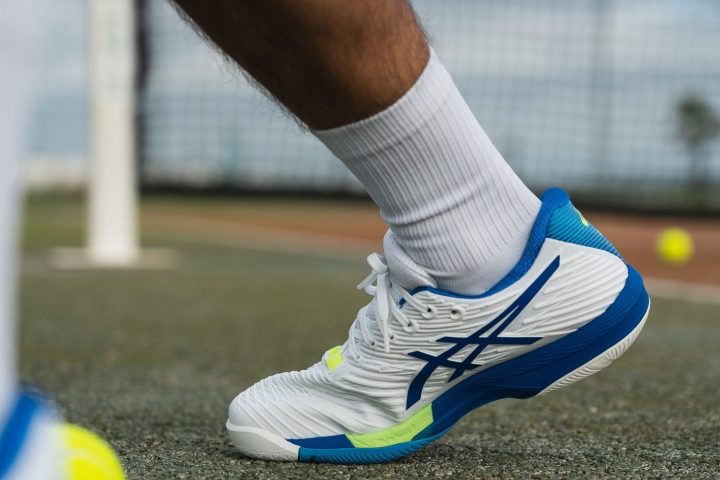
Stability-oriented tennis shoes
|
|
Best for baseline players who prefer solid and supportive shoes
|
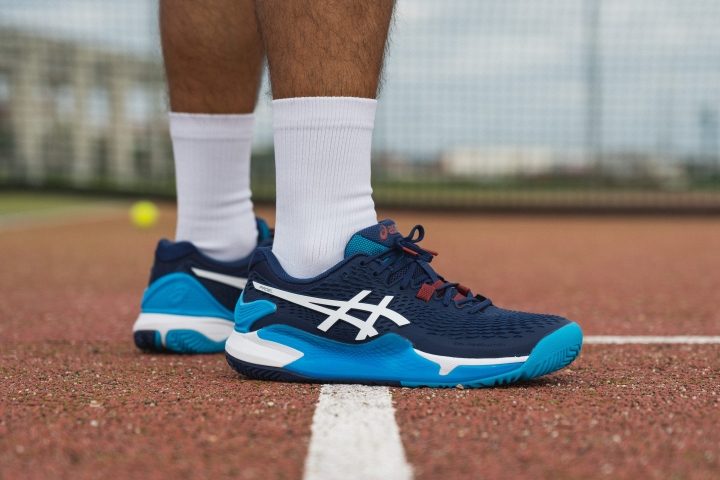
In our lab, we measure over 30 parameters that help us determine whether a given tennis shoe belongs to the speedier bunch or the more stability-oriented category. We assess torsional rigidity, heel counter stiffness, and midsole width in particular.
Choosing the right cushioning in tennis shoes
As a high-impact sport, tennis can be pretty hard on the player's joints and body in general.
But not all tennis shoes provide the same amount fo cushioning and impact protection, so how do you know which one works best for you?
We follow the industry's recognised ASTM F1976 protocol for measuring each shoe's shock absorption. The higher the SA reading, the more impact forces are absorbed by the shoe.
This is particularly important for:
- athletes with joint pain, foot conditions, or a history of injuries
- bigger and heavier players
- long tennis practises and rallies
NOTE: Shoes with shock absorption measurements between 95 and 105 SA in the heel offer a good amount of impact protection. And if you need maximum cushioning, go for shoes with 105 SA or more.
The shoe's ability to rebound some of the player's energy back, aka energy return, is another important cushioning characteristic. The higher the percentage (%), the springier the ride.
NOTE: For tennis shoes, a normal energy return hovers around 45-55% in the heel. But if you are looking for a bouncy and propulsive experience, try shoes with 55% or more.
Conversely, if you are a fan of a grounded experience with very pronounced court feel, you may want to go for shoes with lower SA and energy return readings.
Make sure you get the durability you need
Aggressive lateral movements, forceful slides, and toe dragging all put a serious toll on tennis footwear. So much so, that professional players blow through their pairs within weeks!
To put each tennis shoe through its paces, we convert hours of on-court playtesting into a series of demanding lab tests.
We apply a Dremel with a sandpaper tip to the most abrasion-prone areas of a tennis shoe: the toebox, the heel padding, and the outsole.
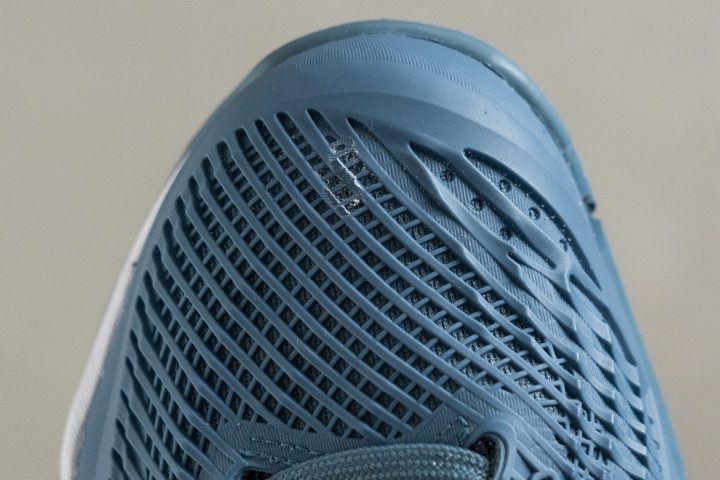
Based on the level of damage, we assess the shoe's toebox and heel padding durability on a 1-5 scale, where 5 is the most hard-wearing. Here is the list of tennis shoes that scored the best:
As for the outsole, we use a tread gauge to measure the depth of the dent created by 22 seconds of Dremel drilling. Shoes with the shallowest dents promise to have better outsole longevity:
More premium tennis shoes also come with a 6-month durability warranty. It is a one-time replacement guarantee that applies to tennis shoes that have sustained considerable outsole damage within 6 months from the day of purchase.
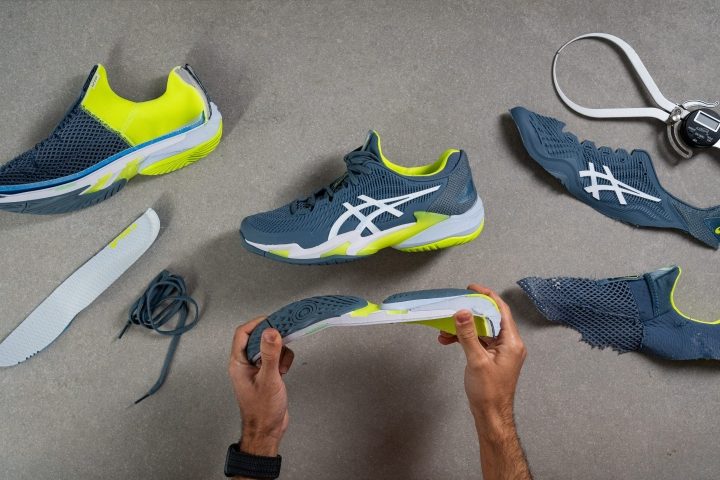
Outsole traction in tennis shoes
Lateral cuts, forward sprints, split steps, sudden starts, and stops – all these movements demand high levels of outsole traction to be performed safely and confidently.
But how do you know if a tennis shoe has good grip without testing it out on the court?
Our lab equipment allows us to test each shoe's outsole traction in accordance with the SATRA TM144 standard. Conducting the test on a dry slab of concrete, we mimic a stopping motion of the foot and record each shoe's friction coefficient in the forefoot. The higher the coefficient, the grippier the shoe.
NOTE: A friction score of 0.70 - 0.85 indicates good traction for a tennis shoe, while scores above 0.85 imply the stickiest grip.
Finding the best fit in tennis shoes
The shoe’s ability to hold your foot securely defines the level of grip, stability, and sure-footedness on the court.
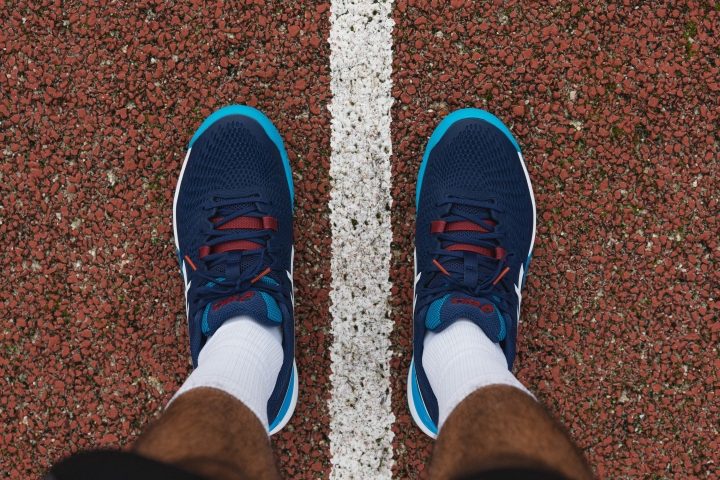
When you try on a pair of tennis shoes, check for the following signs of the right fit:
Heel: should be locked inside the heel counter and not slipping out.
Midfoot: the hold must be firm. Your foot should feel a brace-like containment as it is crucial for side-to-side stability on the court.
Forefoot: a little extra space in front of your longest toe, around 1-1.5 cm (½ inch). It allows for some wiggle room throughout the movement and accommodates foot swelling during longer games.
The fit should not be constricting on the ball of the foot, either. If you need more space, consider Wide or Extra Wide tennis shoes.
To quantify the volume of the shoe, we've come up with a special gel formula that we pour into the shoe and then freeze.
When the gel mould is ready (hardened), we start taking measurements.
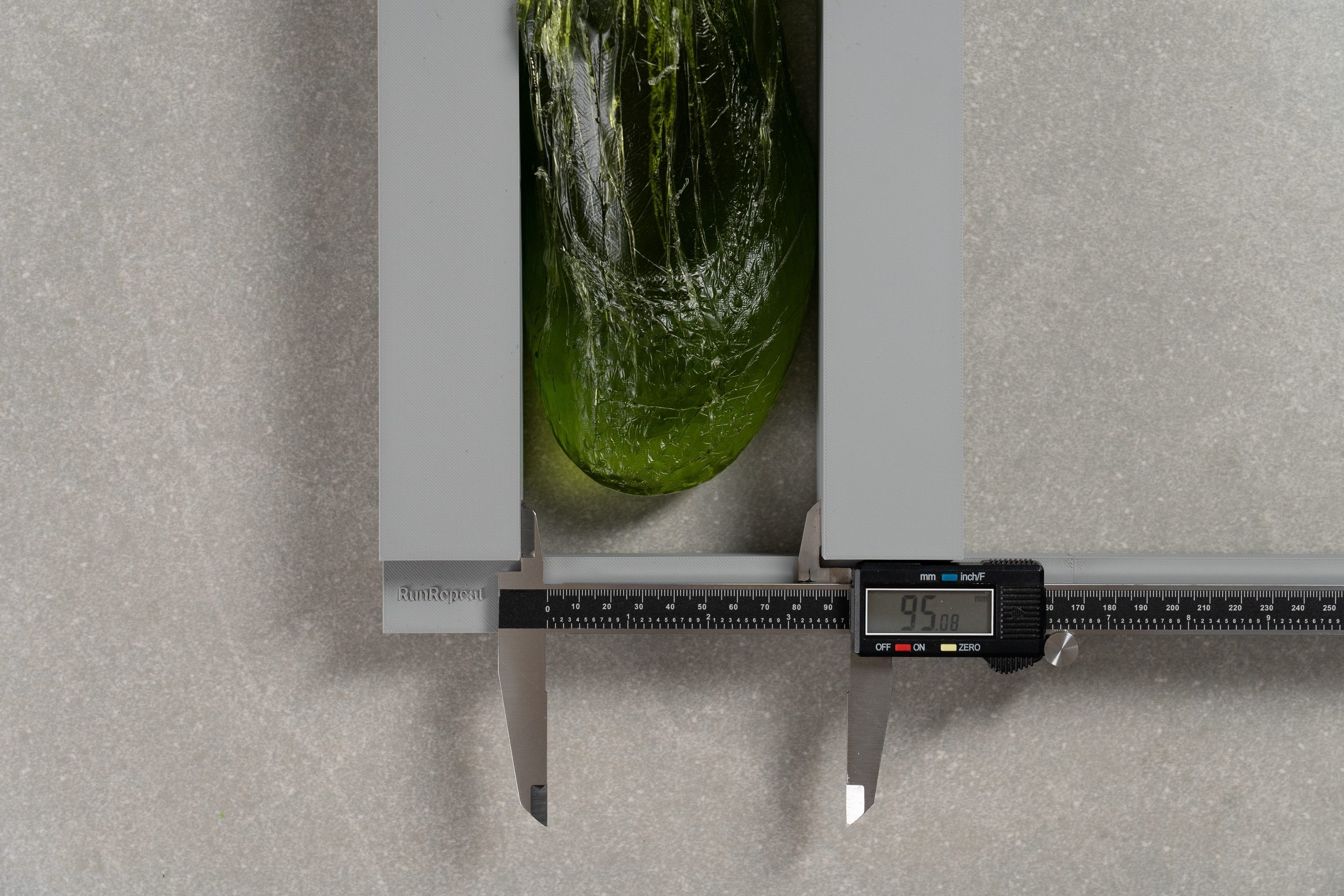
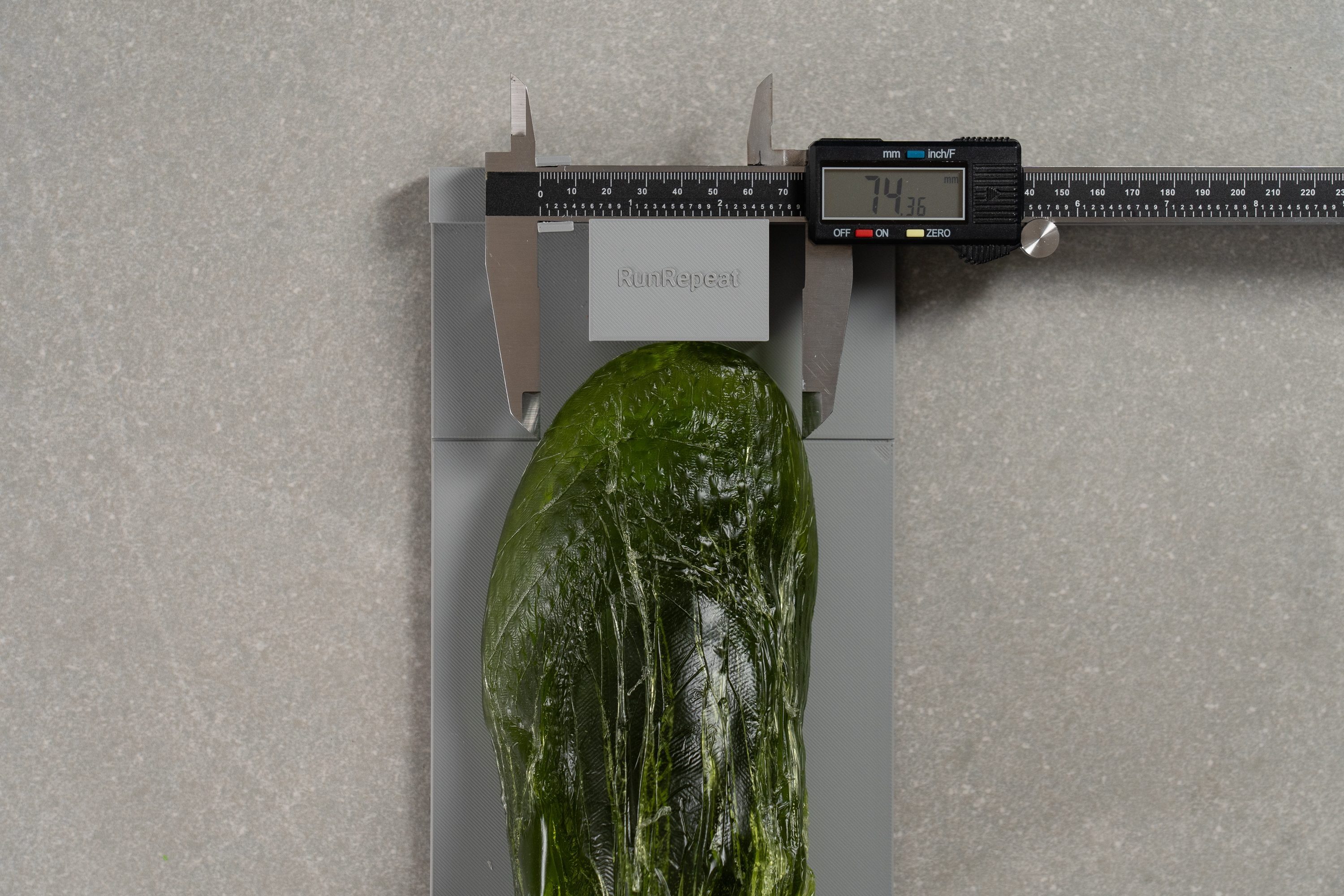
Whether you need more room where the shoe is the widest or at the big toe depends only on the shape of your toes.
Some tennis players, however, need more vertical space as well. To cover this as well, we cut our gel mould in half and measure the height of the toebox.

If you kept getting black or bleeding toenails in your tennis shoes, or just dealt with the pressure from the top, here's a list of tennis shoes with the highest toebox.
Can you wear trainers as tennis shoes?
No, God, please, no.
We do not recommend wearing casual trainers for tennis. Not just because they lack proper abrasion resistance but, more importantly, because they can lead to injuries due to lack of proper foot support!
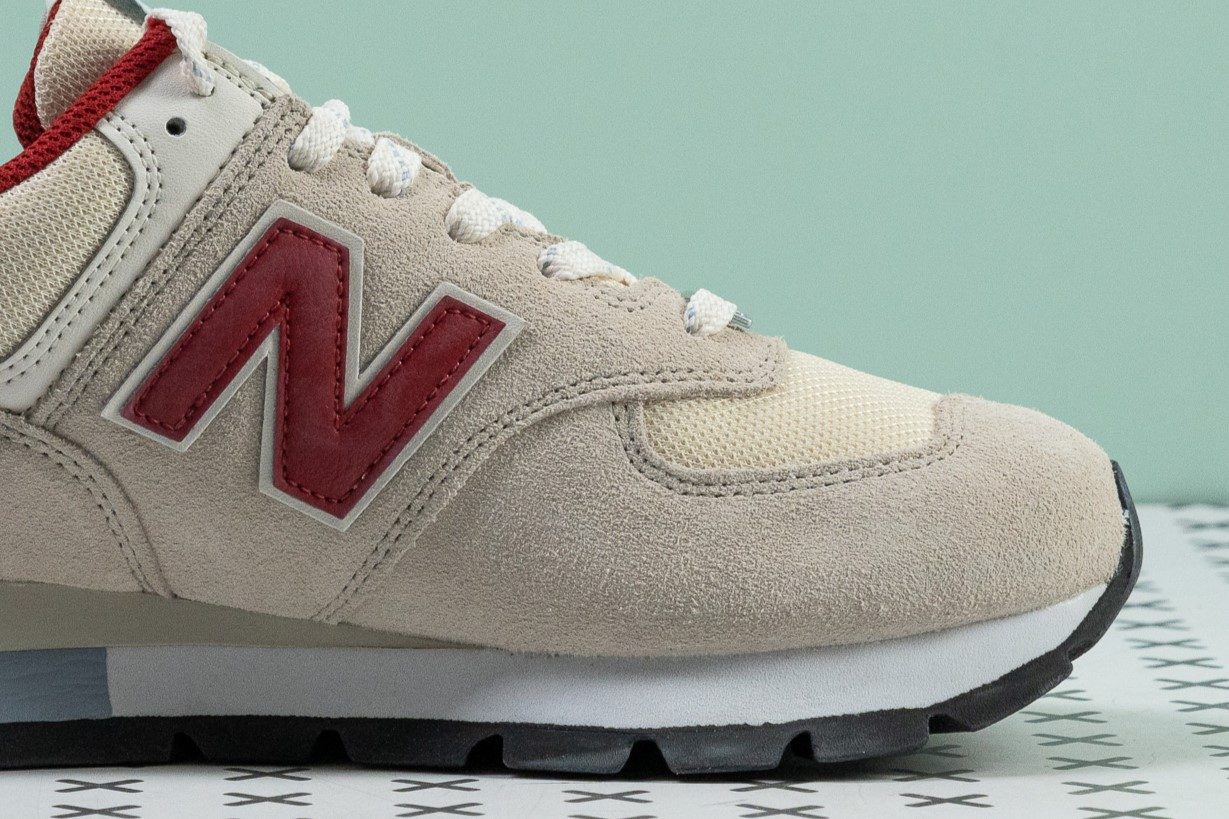
Toe dragging is a very common movement in tennis. Which of these two shoes would you trust more as you slide in and out of the shot?
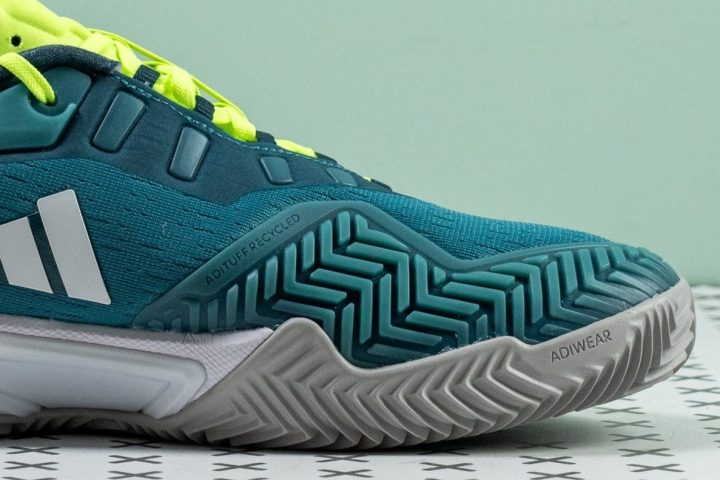
The only type of sports footwear that is closest to tennis shoes is basketball shoes. However, they are not ideal either for several reasons listed below.
|
Reasons not to use other shoes for tennis |
|
|
Trainers and Running shoes |
NOT recommended because they:
|
|
Basketball shoes |
can be used because these shoes:
NOT recommended because they:
|


